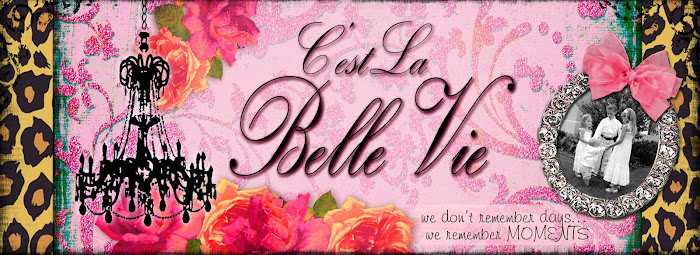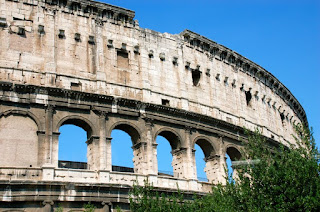Today is the BIG Day...we are headed to the renowned city of ROME!
My heart started racing as my eyes caught sight of some of the most famous historical sites of all time
Greg's most anticipated stop...THE COLOSSEUM
Such a sight to behold!
Cute lil Italian ride
The Colosseum was started in the aftermath of Nero's extravagance and the rebellion by the Jews in Palestine against Roman rule. Nero, after the great fire at Rome in AD 64, had built a huge pleasure palace for himself (the Golden House) right in the centre of the city
The Roman Forum
The Roman Forum is located in a valley that is between the Palatine hill and the Capitoline hill. It originally was a marsh, but the Romans drained the area and turned it into a center of political and social activity. The Forum was the marketplace of Rome and also the business district and civic center. It was expanded to include temples, a senate house and law courts. When the Roman Empire fell, the Forum became forgotten, buried and was used as a cattle pasture during the Middle Ages.
These Roman Soldier Dudes cracked me up!!!
Until 509 BC, when Rome became a republic, the city was reigned by an Etruscan dynasty of Tarquin Kings.
Only three pillars remain of the Temple of Castor and Pollux. The original temple was built in 484 BC, the current ruins date from its last reconstruction in 6 A.D. The temple was built by the roman dictator Postumius who vowed to build the temple if his army would beat the Tarquin Kings who previously ruled Rome. According to the legend, Castor and Pollux, mythological twin brothers, helped the Roman army to victory and announced the victory at the forum.
It has to be said that one of the most amazing things about the Temple of Romulus (Tempio di Romolo) in the Roman Forum is the front door. It is green and made of bronze. The fact is that the door is about 1700 years old and survived the sacking of Rome by the Visigoths and numerous other disasters intact.
Just as I attract to doors, my eye is also drawn to CROSSES...and to my delight, they were everywhere!
To see a touch of my Jesus throughout such ancient history totally strengthened my Faith!!
I know you may think, what is the big deal w/ these pictures? The fact that these pieces of rock, concrete & marble represent the beginning of architecture blows my mind!
All roads lead to Rome...
It is often said that "all roads lead to Rome," and in fact, they once did. The road system of the Ancient Romans was one of the greatest engineering accomplishments of its time, with over 50,000 miles of paved road radiating from their center at the miliarius aurem in the Forum in the city of Rome. Although the Roman road system was originally built to facilitate the movement of troops throughout the empire, it was inevitably used for other purposes by civilians then and now.
Three triumphal arches were built on the forum. They were used by emperors to commemorate their victories.
Hardly any remains are left from the first one, constructed by Augustus in 29 BC.
Hardly any remains are left from the first one, constructed by Augustus in 29 BC.
The Arch of Titus, built in AD 81 commemorates the victory in the Jewish War. It is located at the Via Sacra on the eastern side of the forum.
At the other end of the forum, near the capitoline hill is the Arch of Septimius Severus. It was built in AD 203 to commemorate the victory over the Parthians.
At the other end of the forum, near the capitoline hill is the Arch of Septimius Severus. It was built in AD 203 to commemorate the victory over the Parthians.
Time to enter the long-awaited Colosseum!
Another Roman Soldier Dude :-)
The interior hallway of the Colosseum
Our fearless tour guide, Marco, led our #17 troop through the amazing history!
This history of the Roman Colosseum started hundreds of years before it was actually built when the tastes of Roman citizens craved the excitement and blood lust of the gladiatorial games. Their taste for blood and this form of entertainment dates back to 264AD when the first recorded Roman gladiatorial combats took place in Rome.
Capable of seating 50,000 spectators, the Colosseum was used for gladiatorial contests and public spectacles such as mock sea battles, animal hunts, executions, re-enactments of famous battles, and dramas based on Classical mythology. The building ceased to be used for entertainment in the early medieval era. It was later reused for such purposes as housing, workshops, quarters for a religious order, a fortress, a quarry, and a Christian shrine.
The history of the bloody arena continues through the reigns of various emperors, the emergence of the new Christian religion, the horror stories of the deaths of Christian martyrs in the Colosseum, the Gladiator fights and the killing of thousands of exotic animals in Ancient Rome. The madness of the mob and craving for this type of entertainment finally ended in the 6th century. Interesting facts about the Colosseum of Ancient Rome.
Another cross...
This is where the Roman Ruler would sit to watch all the action!
A few more monumental sights as we make our way to our Restorante
You know what they say about Italian Men...
he Passetto di Borgo, or simply Passetto, is an elevated passage that links the Vatican City with the Castel Sant'Angelo. It is an approximately 800 m long corridor, located in the rione of Borgo. It was erected in 1277 by Pope Nicholas III, but parts of the wall were built by Totila during the Gothic War. On several occasions it served as an escape route for Popes in danger.
Mother Mary is beautifully displayed
Time for Pranzo (lunch)
Our Server HAD to be an undercover Mob Guy...nothing could get him to crack a smile!
We sat with the sweetest family and had a ball!
Yummy Rigatoni followed by, yet again...a full plate of meat, Fagiolini (green beans) & potatoes!
My favorite adult beverage: Champagne!
I got a few extra glasses donated to me throughout our time at lunch.
Don't worry...the glasses were tiny. :-)
Coming Up...VATICAN CITY!!!


































































































1 comment:
I have really enjoyed all your pictures. That is one place I want to go.
Post a Comment